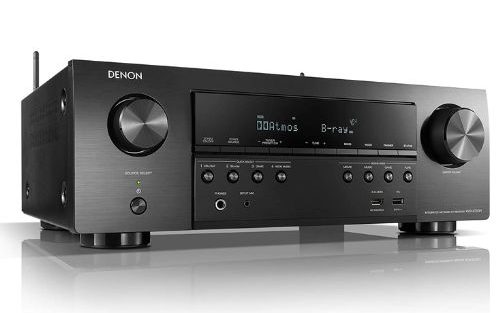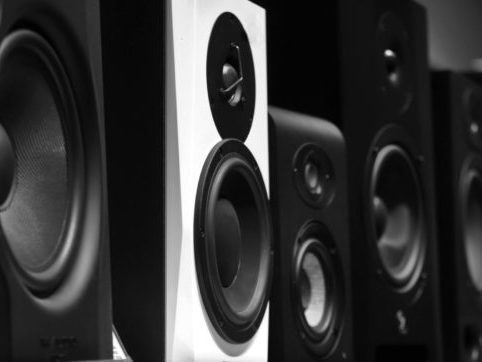There’s often confusion about the differences between Dolby Digital Plus and Dolby Atmos. We break down how the surround sound formats differ.
Table of Contents
What is Dolby Digital Plus?
Dolby Digital Plus is an improvement on the previously existing Dolby Digital codec. With this improved codec, also known as Enhanced AC-3, Dolby Audio could be enjoyed across more platforms and devices. This is because Dolby Digital Plus significantly reduced the bandwidth required for transmitting this Hi-Fi surround sound. This removed the issue of limited bandwidth that hampered many devices. Higher-end devices were no longer required for Dolby Digital Audio.
Dolby Digital Plus offers 100% more performance efficiency than Dolby Digital. It also added support for 7.1 surround configuration and descriptive video services.
Features of Dolby Digital Plus include upon launch:
- Support for 5.1- and 7.1-channel setup
- Full interactive support for BD-Live and Blu-ray BonusView
- Dialogue Enhancement
- Surround Virtualization
- Backward compatibility with Dolby Digital
- Automatic Stereo Downmix
- Scalability for Bandwidth-Constrained Applications
- 32 kbps – 6Mbps Mono-multichannel Data Rates Support
- Compatibility with Windows 10 and Edge Browser
- Native Support on Current Apple Devices
What is Dolby Atmos?

Dolby Atmos is a cutting-edge audio technology that builds on existing 5.1 and 7.1 surround sound systems. This technology enhances immersion by adding height to these existing 5.1 and 7.1 surround setups. Dolby Atmos represents a significant improvement over previous surround sound formats. Most home theater enthusiasts have taken notice. But how does it work?
Described as an object-based surround sound system, Dolby Atmos added height channels to existing the existing surround sound experience. With additional height or overhead speakers and a compatible AV receiver, Dolby Atmos allows for surround effects that appear as if they’re coming from above. Imagine a movie scene where you rain is pounding on a roof. With Dolby Atmos, that sound can be routed to overhead speakers to add another level of immersion to sound systems. This is an elevated surround sound experience that can be experienced via streaming or a Blu-Ray disc.
Dolby Atmos supports up to 128 channels with unique metadata. Theoretically, those 128 channels can be reproduced via 64 speakers. Dolby Atmos is much more advanced than your run-of-the-mill stereo setup. Of course, home theater setups will have much fewer speakers. Dolby Atmos requires (at a minimum) a 5.1 surround sound system plus two Dolby Atmos speakers. This equates to a 5.1.2 surround sound system.
Difference Between Dolby Digital Plus and Dolby Atmos
From everything we’ve looked at up to this point, we can see that the difference between Dolby Digital Plus and Dolby Atmos lies in their core functions. Dolby Digital Plus was largely an advancement in audio compression technology. Dolby Atmos is a significant advancement in immersive surround sound.
Dolby Digital Plus was the result of a new digital audio compression technology. This allowed Dolby Audio to be available on additional platforms and devices with more limited bandwidth. Dolby Digital Plus accomplished this while retaining sound quality. Dolby Atmos focuses on providing a more immersive surround experience. It achieves this by incorporating height effects into movies, movies, and gaming audio. The result is a truly three-dimensional surround sound technology.
Requirements of Dolby Atmos Home Theater

To enjoy the surround sound offered in Dolby Atmos in your home, let’s quickly look at what you will need as part of your home theater or sound system.
Compatible AV Receiver
Not all AV receivers support Dolby Atmos. To enjoy this feature, it is important that you choose an AV receiver that supports Dolby Atmos. Older receivers won’t include the latest formats, including Atmos.
Some examples of Dolby Atmos enabled AV receivers include:
- Sony STR-DH790 – This is an entry level AV receiver that currently costs less than $500
- Denon AVR-S750H – A bit more expensive with more features
- Denon AVR-X4700H – A Denon receiver that provides more power and features
With any of the above, you can be on your way to enjoying Dolby Atmos surround sound.
Dolby Atmos Device and Content
Dolby Atmos is a highly specialized technology and so not all streaming devices currently support it. You can currently get Dolby Atmos on the following streaming devices:
- Apple TV 4K
- Amazon Fire TV Cube
- Fire TV Stick 4K Max
- Fire TV Stick 3rd Generation 2021
- Fire TV Stick 3rd Generation 2020
If you own a Blu-ray player, it should be able to play Atmos sound if it was released after 2013. 4k Ultra Blu-ray players are also equipped to play Dolby Atmos sound. Aside from the devices, the content itself also has to be mixed for Atmos for the best experience.
Atmos Speakers
You will need dedicated speakers to produce height effects for true Dolby Atmos audio. Unlike Dolby Atmos Height Virtualization, real Dolby Audio requires more speakers. These height channels are speakers are specifically needed to produce the Atmos overhead effects. Even bookshelf speakers can be used for Dolby Atmos effects. The most popular options for Dolby Atmos speakers are ceiling speakers, height speakers, and front upfiring speakers.
Ceiling speakers are typically thought to provide the best Dolby Atmos experience. Unfortunately, speaker placement and installation can be difficult and expensive. Front upfiring speakers are the most convenient and simple placement option. They can be placed on top of bookshelf or floorstanding speakers. Upfiring speakers project height effects onto the ceiling. They then reflect off the ceiling onto the listener. While some prefer this experience, it’s often considered the least optimal solution for Atmos speakers.
Height speakers represent a middle-ground for installation and immersive Dolby Atmos. They are mounted on the wall near the ceiling. Speaker placement in front and behind the listener is possible with all three options.
Conclusion: Dolby Digital Plus vs Dolby Atmos

So far, it’s clear that the Dolby Digital Plus vs Dolby Atmos comparison is not necessarily an equal comparison. While both are surround sound formats, their biggest benefits center around two different capabilities. Dolby Digital Plus is all about advancing Dolby’s audio compression technology. Dolby Atmos is the newer surround sound format. It adds height channels to Dolby Audio for a significantly more immersive experience. It builds on the capability of Dolby Digital Plus making this a fair and complicated comparison.

Keith Collins has been writing for over 15 years for various publications. He’s a lover of music, home theater, and excellent sound quality. His fondness for technology in addition to his non-stop curiosity fuels his writing ventures.